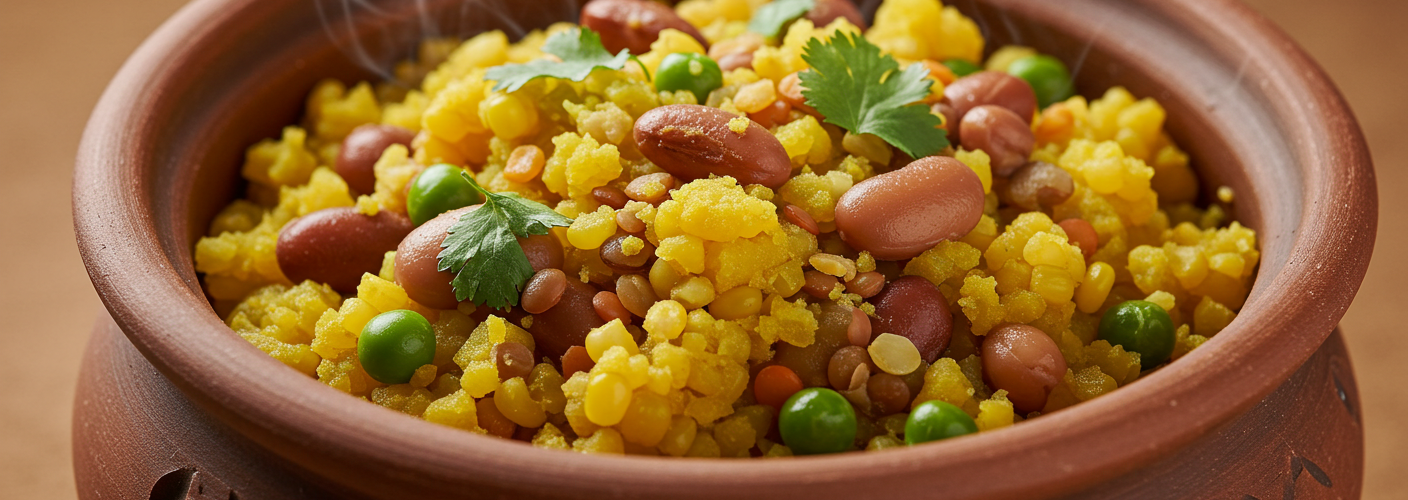Kenyan Githeri is not just a dish; it’s a cultural cornerstone, a blend of simplicity and nourishment that has fed generations. Often seen as a staple food, Githeri consists primarily of maize and legumes mixed and boiled together, creating a delightful meal that is both hearty and fulfilling. Its origins trace back to the Kikuyu community, but today, Githeri is loved and enjoyed by people across all corners of Kenya.
What makes Githeri so appealing is its versatility. The basic recipe calls for dry maize and a mix of legumes, typically kidney beans or cowpeas, which are cooked until tender. However, the dish can be customized in numerous ways to cater to personal tastes and preferences. Some families add vegetables like potatoes, carrots, or greens, while others may include spices, tomatoes, or even minced meat to enhance the flavor profile.
Cooking Githeri is both an art and a science. To prepare this nutritious meal, one must first soak the maize and legumes overnight to then boil them together in water until they are soft. The proportions can vary depending on what you have on hand or what you prefer, but maintaining a good balance of maize and legumes ensures that the dish remains true to its roots. Once cooked, many people enjoy seasoning Githeri with a sprinkle of salt and a dash of pepper, or they might sauté onions and tomatoes to create a more robust sauce that can be mixed in.
The beauty of Githeri lies not just in its taste but also in its nutritional value. Both maize and legumes are packed with essential nutrients, making this dish a wholesome option for families. It is rich in protein, fiber, vitamins, and minerals, helping to keep everyone satisfied and energized throughout the day. Githeri is a perfect example of a complete meal that is light on the pocket yet rich in flavors.
Beyond the kitchen, Githeri holds significant cultural importance in Kenya. Traditionally, it is a communal dish, often served during gatherings, celebrations, and important ceremonies. Sharing a plate of Githeri fosters togetherness, reminding everyone of their roots and the shared experiences that bind them as a community.
As times change and society evolves, Githeri has also adapted to modern culinary trends. Innovative chefs and home cooks alike are exploring ways to incorporate Githeri into gourmet dishes, from Githeri burgers to Githeri bowls with avocado and greens. These contemporary twists pay homage to the traditional dish while introducing it to new audiences, showcasing its versatility beyond just a simple meal.
For anyone looking to experience authentic Kenyan cuisine, Githeri should undoubtedly be on the menu. Whether prepared at home or enjoyed at a local eatery, the flavors and textures reflect the richness of Kenyan culture. It speaks to the heart of the nation, combining aspects of tradition, community, and nourishment into one delicious bowl.
In conclusion, Kenyan Githeri is more than just maize and legumes mixed together. It is a symbol of heritage, sustenance, and adaptability. Whether as a daily meal or a festive dish, Githeri will always hold a special place at the table, inviting everyone to enjoy a taste of Kenya’s culinary legacy. So next time you gather with friends or family, consider serving up a hearty dish of Githeri and celebrate the flavors that tell a story of togetherness and tradition.




Add comment